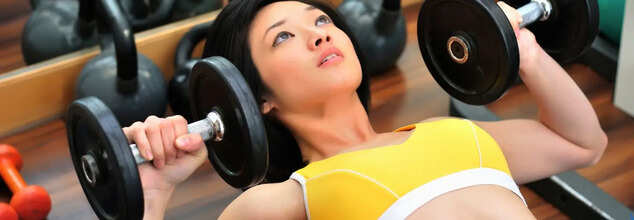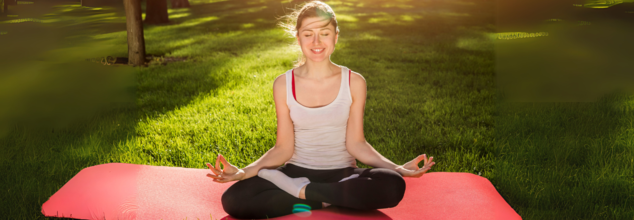- Health Conditions A-Z
- Health & Wellness
- Nutrition
- Fitness
- Health News
- Ayurveda
- Videos
- Medicine A-Z
- Parenting
- Web Stories

Credit-Canva
Desk Exercises All Corporate Workers Should Know
When you are spending nine to ten hours sitting at a desk, you rarely have any time to yourself as you must do essential chores and get ready for the next day as soon as your workday is over. In this schedule you can see a glaring lack of one of the biggest essentials a person needs, exercising. While you may have a normal weight, there are a barrage of medical problems you can run into when you are an office worker.
Imagine the strain your body is under when you are working for long stretches in a day. Your neck will be stiff and hurting, your back will also feel inflexible, and you will feel a burdening sense of fatigue no matter how much you sleep. This is where desk exercises come into play. While many people believe that doing desk exercises is just lazy, they are the most accessible forms of exercise that you can do anywhere, any time and with minimal or no equipment.
Desk Exercises You Can Do To Avoid Strain
Many studies have shown that being immobile for so long can cause you to develop several health issues and is really bad for your health. Sitting for long stretches is bad for your health because it slows down your metabolism, making it harder for your body to control things like blood sugar, blood pressure, and weight, which can increase your risk of diabetes, heart disease, and obesity. The poor circulation can also lead to different issues like ankle, neck and joint pain, even blood clots. Here are some exercises you can do, even while sitting.
Chair Squats
Stand with feet shoulder-width apart, facing away from your chair. Lower yourself like you're about to sit, lightly touching the chair, then stand back up. This strengthens your legs and glutes. Repeat 10-15 times.
Arm Circles
Extend your arms out to your sides at shoulder height. Make small circles forward for 15-20 seconds, then reverse the direction. This improves shoulder mobility and gets your blood flowing.
Seated Leg Extensions
Sit tall in your chair and slowly straighten one leg out in front of you. Hold for a few seconds, then lower it back down. Repeat with the other leg. Do 10-15 repetitions on each leg to work your quads.
Seated Neck Circles
Gently drop your chin to your chest and slowly roll your head in a circle, first clockwise, then counterclockwise. This helps relieve neck tension and improves neck mobility. Repeat 5-10 circles in each direction.
Seated Torso Twists
Sit up straight, place your hands on your shoulders, and gently twist your upper body to the left, then to the right. This helps improve spinal mobility and stretches your back muscles. Repeat 10-15 times on each side.
Chair Dips
Sit on the edge of your chair, place your hands on the seat beside you, and slide your hips forward. Lower your body by bending your elbows, then push back up. This strengthens your triceps and shoulders. Aim for 8-12 repetitions.
Desk Push-Ups
Place your hands shoulder-width apart on your desk. Step back so your body forms a straight line. Lower your chest towards the desk, then push back up. This strengthens your chest, shoulders, and triceps. Aim for 8-12 repetitions.
Standing Calf Raises
Stand with your feet hip-width apart. Rise up onto your toes, lifting your heels off the ground, then lower back down. This strengthens your calf muscles and improves ankle stability. Repeat 15-20 times.
Desk Plank
Place your forearms on your desk, shoulder-width apart, and step back until your body forms a straight line. Engage your core and hold this position for 30-60 seconds. This strengthens your core and improves posture.
Ankle Circles
While sitting, lift one foot off the ground and make circles with your ankle, first clockwise, then counterclockwise. This improves ankle flexibility and circulation in your lower legs. Repeat 10-15 circles in each direction per foot.

Credit: Canva
What Workout Regime Should Women With Heavy Bust Follow?
Despite being a prominent muscle group, the pectoral muscles, or pecs, are often overlooked in fitness routines, particularly by women. The growing popularity of lower body workouts has led to neglecting the chest, but fitness experts stress the importance of incorporating chest exercises for overall upper body strength and functionality.
There is a misconception that women do not need to train their pecs due to having breasts. However, the pectoralis major and minor muscles, located beneath the breast tissue, play a crucial role in maintaining good posture, enabling effective breathing, and supporting daily activities. Targeted chest workouts can significantly enhance these functions.
Pec Muscles Are Composed Of Two Main Muscles
The pecs are composed of two main muscles: the larger, fan-shaped pectoralis major and the smaller, triangular pectoralis minor, situated beneath the major muscle. Together, they assist in maintaining an upright posture and stabilising the shoulder blade and joint. Exercise physiologist Joel Seedman, Ph.D., notes that weak or overly shortened pecs can contribute to poor posture and even breathing difficulties. "If the chest muscles are shortened due to slouching at a desk, it can impair the ability to open up the diaphragm, affecting oxygen flow," he explains.
Incorporating chest workouts not only helps correct posture but also makes breathing easier by allowing the pec minor to stretch and expand the rib cage during inhalation. This is especially beneficial for those who spend long hours seated or hunched over electronic devices.
Additionally, strengthening the chest muscles can create a natural lift for the breasts. Contrary to the common belief that chest exercises can cause breast shrinkage, Seedman suggests they can actually enhance the appearance of the breasts by pushing the tissue up and forward, creating a perkier look.
Moreover, the pecs are essential for daily tasks that involve pushing, lifting, or carrying. "Nearly every upper body movement, from carrying groceries to pushing a heavy door, requires the use of pectoral muscles," says Seedman. Neglecting these muscles can lead to unnecessary strain and discomfort during such activities.
Chest Workouts Also Target Surrounding Muscles
Lastly, chest workouts not only target the pecs but also engage surrounding muscles, including the triceps, shoulders, and back. For instance, a chest press effectively strengthens the triceps while also activating the chest. A study published in the Journal of Strength & Conditioning Research highlighted that chest press variations can effectively target specific muscle groups, making them ideal for comprehensive upper body training.
For a well-rounded chest workout at home, fitness trainer Jenny Gaither, founder of the Movemeant Foundation, recommends using a set of dumbbells, a medicine ball, and a Swiss ball. Her suggested circuit includes moves like medicine ball push-ups, chest passes, single-arm chest presses, Y raises, renegade rows, and rear lateral raises. Performing each exercise in a circuit with minimal rest between sets can effectively target the chest and surrounding muscles.
Incorporating chest workouts into a regular fitness routine not only strengthens the upper body but also improves posture, breathing, and overall functionality. Whether aiming for better posture or enhanced daily performance, dedicating time to chest exercises can yield significant benefits for women of all fitness levels.

Credits: Canva
Easy Seated Yoga Poses That Help Align Your Spine
When people think of yoga they visualize someone doing vrikshasana or bhujangasana (tree pose and cobra pose). Something that looks difficult to do properly without proper practice. However, there are many poses that are easier to do and not complicated for beginners. Even with the difficult poses, it is best to do them slowly but surely, as practice makes perfect.
One such pose that is easy to do yet has many benefits is Sukhasana. It can be a transition pose between different yoga poses or something that you can practice periodically over the day. Not only will it allow your leg muscles to grow stronger but also flexible and build their endurance.
Because it's so gentle, anyone can do it, even if you're just starting your yoga journey. You'll often find Sukhasana used at the beginning or end of a yoga practice to help you settle in or wind down.
How to Do Sukhasana
This calming pose is usually held for about a minute at the start of a class. When used at the end, you might hold it for one to five minutes or even longer during meditation. Here’s how to get into Sukhasana:
- Sit on your yoga mat, a blanket, or the floor with your legs stretched out in front of you.
- Let your arms rest by your sides and gently straighten your shoulder blades.
- Slowly cross your legs at your shins, placing one leg in front of the other.
- Position each foot comfortably beneath your opposite knee in a cross-legged position.
- Place your hands on your knees with your palms facing down.
- Balance your weight evenly on your sit bones, pressing your buttocks gently into the floor or your support.
- Relax your neck and look straight ahead. Breathe deeply in for a few seconds and out for a few seconds, continuing this throughout the pose. Hold for about a minute or as instructed.
- Uncross your legs, switch which leg is in front, and repeat the steps.
If your hips feel very tight, talk to your yoga teacher about ways to modify the pose to avoid any strain. If you have hip issues, it’s better to sit on a pillow or a thick blanket instead of directly on the floor. You can also use yoga bolsters to lift your hips for more comfort
Benefits of Sukhasana
Sukhasana is a gentle and relaxing pose that helps you turn your attention inward. It also stretches your hips, makes your spine longer, and strengthens your back muscles. When you use it for meditation and rest your hands on your knees with palms up, it can symbolize being open to receiving. Placing your hands in a prayer position helps you focus during deep breaths and concentrate on your thoughts or intentions. Here are some potential benefits of this simple cross-legged pose:
Less Pain: It can help ease pain in your lower back and knees.
Better Movement: It can help loosen up your knees, hips, and ankles.
Calmness: Sukhasana can help you feel peaceful and tranquil. Focusing on your breath in this pose can bring a sense of inner peace and help you stay present.

Credits: Canva
This Fitness Test Could Predict If You’ll Make It To 100
Who though ditching flashy workout routines and trying this classic strength indicator could be the best sign of living a long, healthy life. With biohacking and wearable trackers and pricey full-body scans, it may surprise you to know that one of the easiest predictors of your future wellness isn't something digital—it's in your grasp, literally.
Grip strength, a traditional gauge of physical vigor, is only now being tapped by researchers and longevity specialists internationally. Several research studies have tied this humble test to everything from cardiovascular function and muscle strength to mental acuity and longevity. A 2015 Lancet study hit headlines when it demonstrated that weaker grip strength was a better predictor of early death than blood pressure.
So what does that mean for your health goals? It means your ability to grasp, hold, and carry may be more important than you think—especially if you plan on reaching your 90s, or even living past 100.
Grip strength measures the force exerted by the muscles in your forearm and hand. Although it may seem specialized, it's more of an indicator of your body's general musculoskeletal health. For Dr. Joshua Davidson, a strength and conditioning expert at the University of Derby, "Grip strength tells us more than how solid your handshake is. It reflects your physical activity level and general energy."
Clinical trials regularly employ a hand dynamometer—you squeeze it to test force—but you don't have to visit a lab to test your power. Davidson's suggestion is the "squeeze test": squeeze a tennis or stress ball as tight as possible for as long as possible. Keeping a squeeze of 15–30 seconds in place is an achievement to shoot for.
While a poor grip may not appear to be a big deal—perhaps you simply have a hard time opening a jar—studies reveal it can be an indicator of underlying health problems. Low grip strength correlates with frailty, sarcopenia (muscle loss), and even a higher risk of falls and fractures later in life.
Can Stronger Grip Equal Longer Life?
Decades of research have all proved that the tighter grip strength one has, the longer the lifespan. There's one especially interesting study that followed people from the 1960s into the 2000s. Patients who were in the top third of grip strength were 2.5 times more likely to live beyond the age of 100 than were those with less grip strength.
More recent evidence associates low grip strength with metabolic disorders like type 2 diabetes and insulin resistance, as well as with psychiatric disorders like depression and cognitive impairment. Why? Because muscle has a significant role in blood sugar regulation and maintenance of metabolic health. When grip strength declines, it can indicate more widespread physiological decline.
Actually, a 2019 meta-analysis in Clinical Interventions in Aging discovered grip strength was able to predict disability, cognitive impairment, and even all-cause mortality. Translation: strong hands = strong future.
Whereas social media is full of over-the-top workout fads and fix-it-in-an-hour fitness tricks, the farmer's walk, an exercise as timeless as they come, is slowly creeping back into vogue. Why? Because it's one of the best means of developing grip strength and body stability in general.
The exercise is easy: hold heavy weights in both hands and walk. That's all. But this bodyweight exercise engages your core, builds your shoulders, straightens your posture, and conditions your central nervous system to respond to physical stress.
Research has demonstrated that loaded carries such as the farmer's walk can enhance bone density, balance, and coordination—important elements in preventing injury and preserving independence in advanced age.
And the good news: you can do it at virtually any level of fitness.
How to Progress And Increase Grip Strength?
Beginner: Three sets of 30-second carries with moderate weights
Intermediate: Three sets of 45-second carries with heavier weights
Advanced: Four to five sets of 60-second carries using challenging or uneven weights such as kettlebells or sandbags
Form counts. Move at a slow gait, activate your core and glutes, breathe fully, and finish every carry feeling as if you could've done just a little more.
Tips to Improve Whole-Body Strength and Duration
Enhancing grip strength is not merely a matter of squeezing tighter. In accordance with experts such as Dr. Davidson and Dr. Leong, the strategy lies in whole-body strength development. Resistance training, particularly for the upper and lower body, enhances total muscle mass and aids in grip development.
An age-specific functional test is the "timed get-up-and-go." Stand up from a chair, walk three meters, turn, go back, and sit down again. This evaluates leg strength, balance, and agility—coinciding with what grip strength indicates about the upper body.
For daily training, use these easy exercises:
- Wrist curls (2–3 sets of 10–20 reps per arm)
- Bicep curls with kettlebells or household items
- Tennis ball holds for maximum time
These moves don’t require a fancy gym—just dedication and consistency.
If you’re aiming for healthy aging, don’t overlook your grip. Grip strength is more than a hand test—it’s a reflection of how well your body is aging. It’s accessible, low-tech, and scientifically backed. Whether you’re 30 or 70, building stronger hands through farmer’s walks and resistance training can add more quality years to your life.
In a world of health-obsessed diagnosing, perhaps it's time to return to fundamentals. In some cases, the secret to living longer lies in learning to hold on harder.
© 2024 Bennett, Coleman & Company Limited

